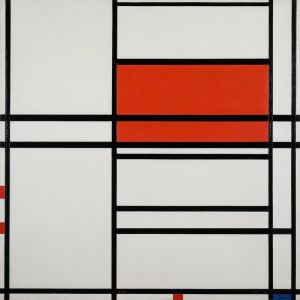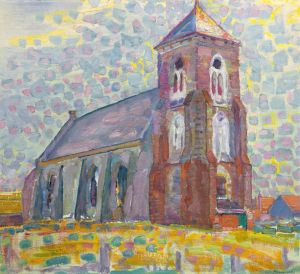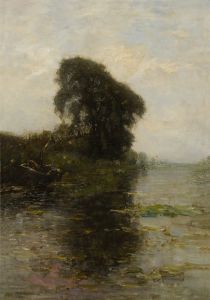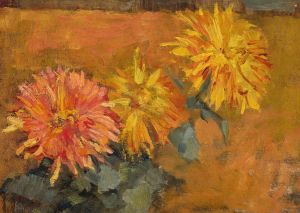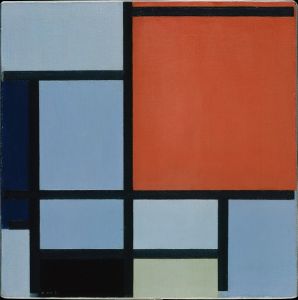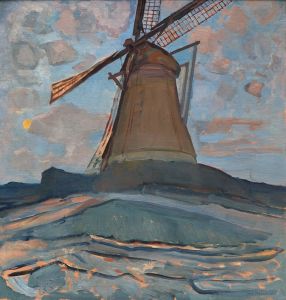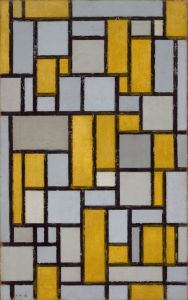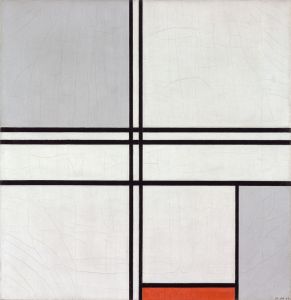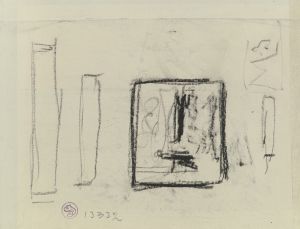
The Winkel Mill
A hand-painted replica of Piet Mondrian’s masterpiece The Winkel Mill, meticulously crafted by professional artists to capture the true essence of the original. Each piece is created with museum-quality canvas and rare mineral pigments, carefully painted by experienced artists with delicate brushstrokes and rich, layered colors to perfectly recreate the texture of the original artwork. Unlike machine-printed reproductions, this hand-painted version brings the painting to life, infused with the artist’s emotions and skill in every stroke. Whether for personal collection or home decoration, it instantly elevates the artistic atmosphere of any space.
Piet Mondrian, a Dutch painter renowned for his contribution to the De Stijl art movement, is best known for his abstract works characterized by geometric forms and primary colors. However, before Mondrian fully embraced abstraction, he produced a number of representational works that reflect his early artistic development and exploration of different styles. One such work is "The Winkel Mill," which provides insight into Mondrian's transitional phase from traditional landscape painting to his later abstract compositions.
"The Winkel Mill" is an oil painting created by Mondrian in 1908. During this period, Mondrian was deeply influenced by the Dutch landscape and the natural environment, which is evident in his choice of subject matter. The painting depicts a windmill, a common motif in Dutch art, set against a serene landscape. This work is part of Mondrian's early oeuvre, where he was experimenting with various styles, including Impressionism and Post-Impressionism, before moving towards Cubism and eventually developing his unique abstract style.
In "The Winkel Mill," Mondrian employs a vibrant color palette, which is indicative of his interest in the Fauvist movement and the works of Vincent van Gogh. The use of bold colors and dynamic brushwork in the painting suggests Mondrian's exploration of how color and form can convey emotion and atmosphere. The composition of the painting, with its emphasis on vertical and horizontal lines, foreshadows Mondrian's later works, where he would use these elements as the foundation for his abstract compositions.
The painting also reflects Mondrian's interest in the spiritual and theosophical ideas that were prevalent during the early 20th century. Mondrian was influenced by theosophy, a spiritual movement that sought to understand the divine and the universe through a synthesis of science, religion, and philosophy. This influence is evident in his search for harmony and balance in his compositions, which would become more pronounced in his later abstract works.
"The Winkel Mill" is significant in Mondrian's artistic journey as it represents a bridge between his early representational work and his later abstract style. It demonstrates his evolving approach to color, form, and composition, which would eventually lead to his development of neoplasticism, a style characterized by the use of straight lines, right angles, and primary colors.
Today, "The Winkel Mill" is appreciated not only for its aesthetic qualities but also for its historical significance in understanding Mondrian's artistic evolution. It serves as a testament to Mondrian's ability to transform traditional subjects into innovative compositions that challenge conventional perceptions of art. The painting is housed in various collections and continues to be studied by art historians and enthusiasts who seek to understand the progression of Mondrian's work and his impact on modern art.
Through "The Winkel Mill," viewers can trace the roots of Mondrian's artistic philosophy and appreciate the early stages of his journey towards abstraction, which would ultimately redefine the boundaries of visual art in the 20th century.





